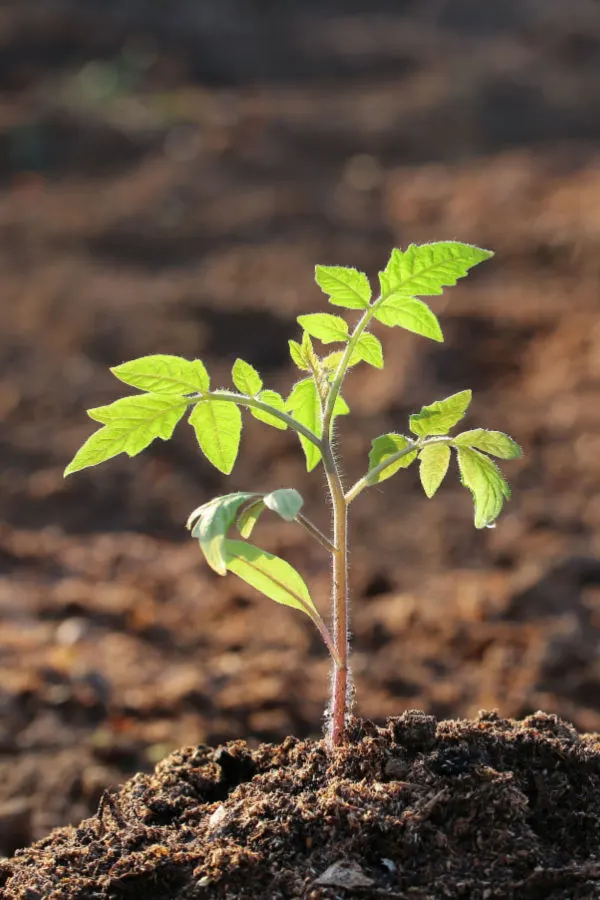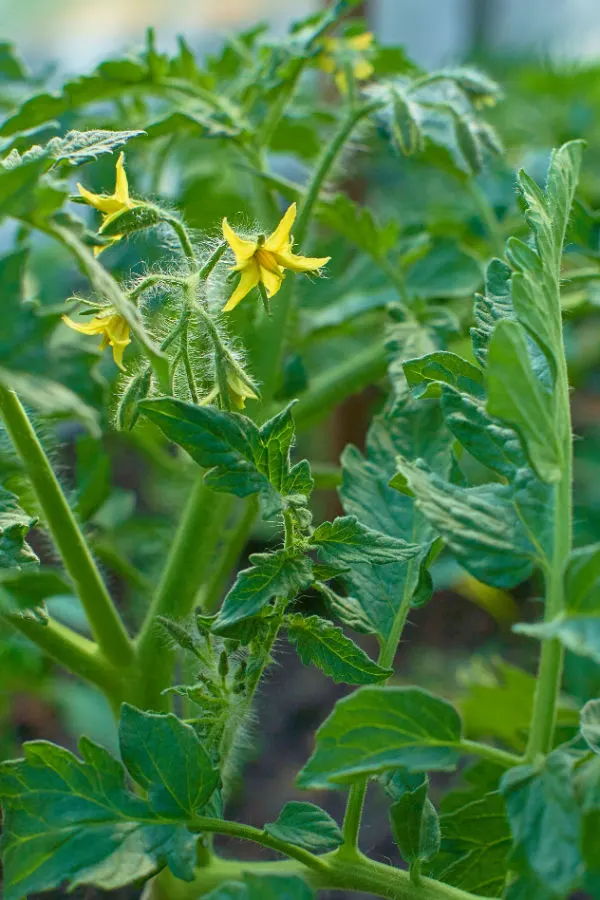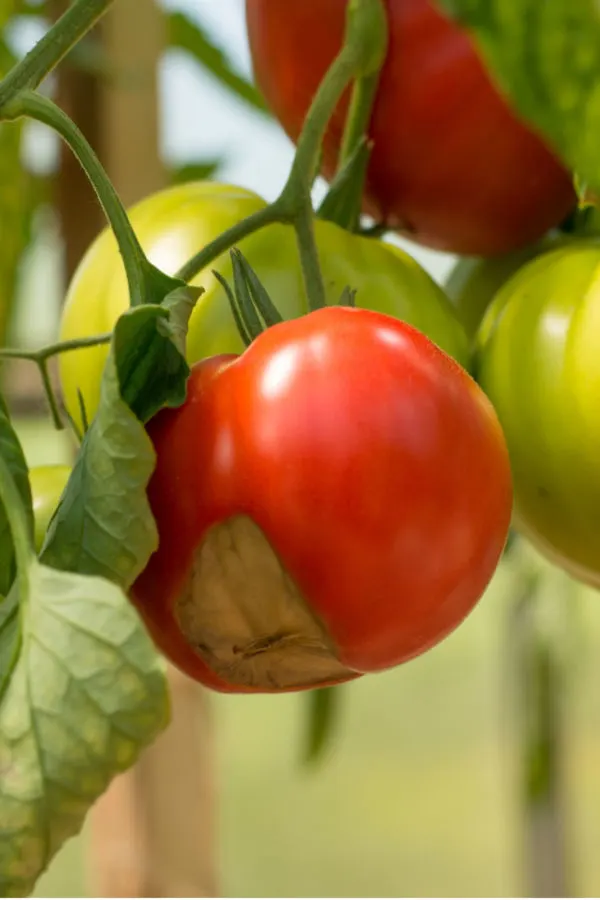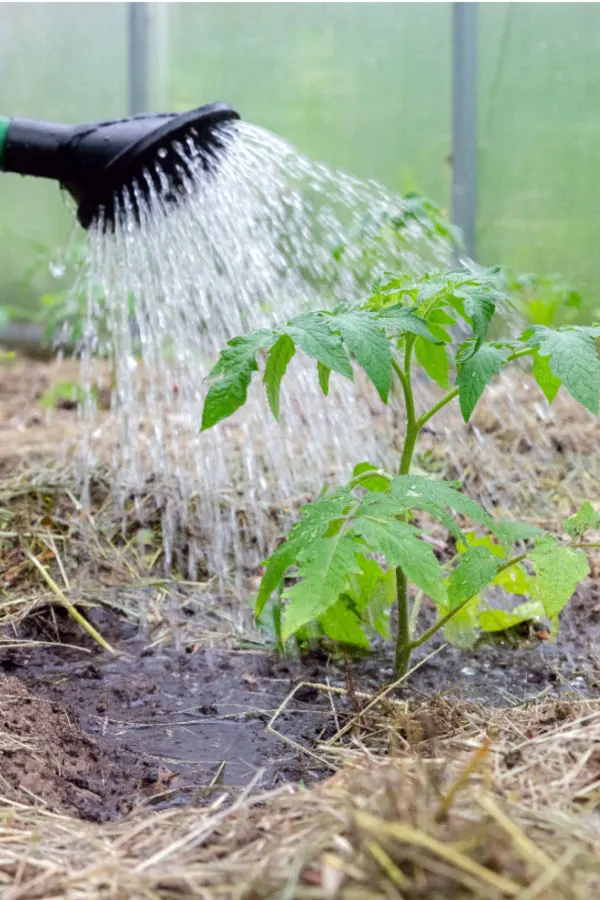When it comes to getting young tomato plants off to a fast start early in the season, nothing can be more helpful than fertilizing. But, as you will see below – how, when and what you power your plants with early on is the real secret to growing great plants, and a huge crop of tasty tomatoes!
Tomato plants need a lot of power to fill out and grow strong. Not only do they require the typical big power of nitrogen (N), phosphorous (P) and potassium (K), but a host of other nutrients to produce great roots, strong foliage – and eventually, lots of blossoms and fruit.
The first four to six weeks of a tomato plant’s life in the soil are extremely important for setting the stage for success. Plants need to develop strong roots early in the season to help anchor and feed the plant as it grows.

The deeper and more developed a root system is, the more nutrients and moisture it can absorb for the plant. Likewise, the foliage of a plant needs to develop early as well. Without a good leaf canopy, tomato plants will struggle with the process of photosynthesis, which also provides energy.
Although plants can and do get power from the soil they are planted in, giving them an extra boost of nutrients at this early stage can be vital to jump starting their growth. And the faster they get growing – the better they will produce later!
How To Fertilize Young Tomato Plants For Success
How you fertilize, when you fertilize, and what you use to power your young tomato plants are 3 critical factors in just how well your tomato plants will begin to grow early on. With that in mind, here is a look at how to best tackle each of those three needs with ease and success!
The How-To Of Fertilizing
Unfortunately, for young plants, fertilizing is not as simple as loading them up with a big dose of energy. In fact, that can actually create more harm than good. Too much power will lead to an overproduction of foliage – and little to no fruit later.

When any vegetable plant receives an abundance of energy, they will put it toward growing more stems and leaves. And when that happens, the plant usually slows or even stops bloom production. And with young plants, too much fertilizer can even kill the plant if it’s in a high enough dose.
Powering Young Tomato Plants Right
There are a few important factors to consider when powering young tomato plants. The first is that they need to be given a low, slow and steady diet of nutrients.
Small but regular feedings of power are better than a few big doses of high energy all at once. Lower but consistent power creates strong, manageable growth in the roots, and above the soil in the stems and leaves.
Secondly, it’s important when fertilizing to make sure the nutrients you are giving your plants are in the right balance. Too much nitrogen will create too much foliage. Too little phosphorous can mean less root growth. And without enough potassium, tomato plants have trouble producing blooms and fruit.
In addition to the big three, they also need to be getting calcium and other trace minerals to stave off blossom end rot and other issues. See: How To Prevent Blossom End Rot

Finally, and this is extremely critical when powering young tomato plants, the nutrients you give to your plants need to be in a form that is easy for them to absorb. We will cover this topic later when talking about what to fertilize with, but the quicker a plant can absorb the nutrients, the better!
The When – How To Fertilize Young Tomato Plants To Get Them Growing Fast
So when should you start fertilizing newly planted tomato plants? For starters, when they first go in the ground, you can help your plants immediately by powering their planting hole.
Adding generous amounts of compost, worm castings, coffee grounds and pulverized egg shells into the hole when planting will help energize the roots quickly. All four also happen to provide the right balance of nutrients as well. See: Planting Tomatoes – 4 Must Add Ingredients To Put In Every Tomato Planting Hole!
But beyond adding those nutrient sources to the planting hole, you do not want to add any additional fertilizer on planting day. Or, for that matter, during the first seven to ten days after planting. Why? Because new plants need time to settle in from the shock of transplanting.
Putting fertilizer on too soon after transplanting will actually harm more than help tomato plants. It can put them in even more shock, and can damage leaves and roots in the process. Instead, allow your plants a week to ten days to set its roots firmly into the soil.
Listen In To Our Podcast On How To Prune Your Tomato Plants As They Grow!
Once that time period has passed, it’s time to start fertilizing. And regularly! For best results, your plants should be powered every ten to fourteen days after they have settled in. But, and this is key – it needs to be with a balanced, low, slow and easily absorbed nutrient source. And for that – there is no better choice than liquid fertilizers.
The What – How To Fertilize Young Tomato Plants For Success
When it comes to what type of fertilizer to use for tomato plants, liquid fertilizers rule the roost! Liquid fertilizers not only absorb quickly into the roots of plants, but also through the leaves. This double dose of power can help your tomato plants power up quickly.
So what are the best choices for liquid fertilizing? There are great choices for both homemade or store bought liquid fertilizers. No matter what your choice, it’s always best to stay organic in your approach since you will be consuming the tomatoes the plant produces.
If you are looking for an all-natural homemade approach, compost tea is the answer. Compost tea is full of the perfect balance of nutrients that can power tomato plants. Even better, those nutrients are low enough that they can’t overpower plants – and they absorb easily into the roots and foliage too.

You can make compost tea from your own compost, or from store bought compost. Another great option is worm casting tea – made simply from soaking castings in water. Both compost and worm casting tea are nature’s perfect organic fertilizer. Product Affiliate Link : Pure Worm Castings
Both worm casting and compost tea can be applied at full strength every 7 days without worry. The low and slow nature of the power in both allow them to power plants weekly.
Commercial Organic Liquid Fertilizers – How To Get Tomato Plants Growing Fast
There are also some great commercial organic liquid fertilizers available for powering tomatoes. They have a bit more power than compost and worm casting tea, so they should be used at half-strength of their recommended dose every ten to fourteen days instead of weekly.
- AgroThrive All Purpose Organic Liquid Fertilizer
- Miracle-Gro Performance Organics Edibles Plant Nutrition
Look for options that have balanced but lower N-P-K ratios that won’t overpower plants. Always make sure with commercial fertilizers that the first number, which is the Nitrogen content, is not too much higher than the Phosphorous and Potassium numbers.
Nitrogen is important, but it helps plants with foliage growth, while Potassium and Phosphorous help with healthy and bloom and fruit production. It is vital that there is a balance for best results!
When To Stop Fertilizing – How To Get Tomato Plants Growing Fast
So when should you stop fertilizing tomato plants? For determinate varieties that produce all of their crop over a few weeks, stop fertilizing when the fruit is beginning to set in full but has not started to turn yet.
Fertilizing beyond this point for determinates will not help the plant produce any more tomatoes. In fact, fertilizing them late can often stop them from producing all of the fruit they would have.

For indeterminate tomatoes that grow until the first killing frost, once fruit begins to set, back off to every two to three weeks with fertilizing. This will allow your plants to concentrate more on ripening fruit than growing – but still giving them a bit of power to keep growing and producing.
Here is to fertilizing your young tomatoes for big success this year!
Follow Our Facebook Page For Great Gardening Tips And Advice! This Is My Garden Facebook Page
This Is My Garden is a garden website created by gardeners, for gardeners. Jim and Mary Competti have been writing gardening, DIY and recipe articles and books and speaking for over 15 years from their 46 acre Ohio farm. They publish three articles every week, 52 weeks a year. Sign up today to follow via email, or follow along!
